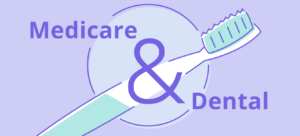Understanding The Differences Between Medicare Part B & Part D

At this point we’ve established that Medicare is confusing. It’s equally confusing to understand your medication coverage when it comes to Medicare. What is covered by Medicare Part B? And what is covered by Part D Prescription Drug Plans? Let’s take a look at both Part B & Part D to better understand the differences.
Medicare Part B is part of Original Medicare and was added to cover medically necessary and preventive services. Part B also covers certain supplies and related services when diagnosing medical conditions such as research, ambulances, mental health treatment, pre-surgery consultations and certain outpatient prescription drugs. Therefore, certain drugs and medications are covered by Medicare Part B. These include (but are not limited to) End-Stage Renal Disease drugs, tube feeding, vaccinations, oral cancer drugs and more.
It’s important that you understand what Part B covers before enrolling in a Part D Prescription Drug Plan. Typically, the medications covered in Part B are different than those covered in Part D and vice versa. As we mentioned earlier, Part B covers very specific items, and outside of those mentioned (and a slew of others), Part D will cover the rest of the prescription drugs. There are dozens of Part D plans to choose from, and each one has a unique formulary, which includes drugs that are covered and under what tier those drugs are in.
When enrolling in a Part D plan, it’s important that you compare each and every plan by sending a list of your medications to a Medicare specialist at Plan Medicare. Your agent will run a thorough drug comparison and evaluate all of the Part D Plans on the market to find you the best one based on your specific medications and even based on your preferred pharmacy. Lastly, if you are already enrolled in a Part D Prescription Drug Plan, it’s equally important to revisit your plan every year, since the formularies can change.






